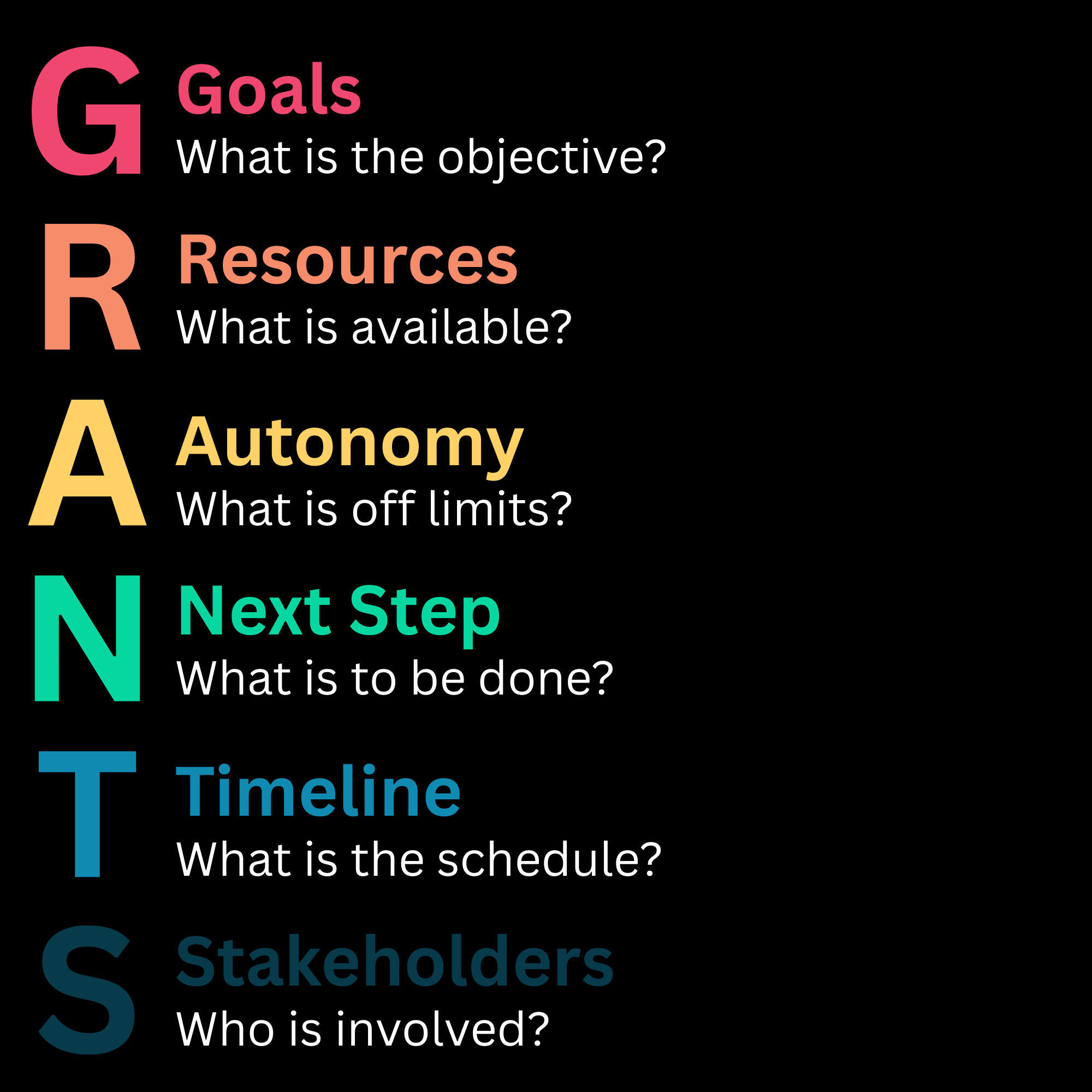The GRANTS Memo: A Simple Framework for Effective Delegation
Delegation often fails because of unclear communication or misaligned expectations.
In many startups or tech teams, leaders often hand off projects with a quick conversation, a Slack message, or a short email. The result? Misaligned priorities, missed deadlines, approval confusion, and a lot of rework. The GRANTS memo is a simple structure I’ve used to quickly delegate projects with a single document and discussion. It’s designed to capture the essential context and expectations in one place so that the receiving team can take real ownership and make good decisions without constant micromanagement.
What is the GRANTS Memo?
The GRANTS memo is a single-page project brief that covers the six key elements every delegated initiative needs:
Goals – What is the objective? What outcomes and outputs matter? What constraints or requirements must be met?
Resources – What budget, people, tools, or other resources are available?
Autonomy – How much decision-making power does the team have? Are there boundaries they cannot cross?
Next Step – What is the very next concrete action they need to take?
Timeline – What’s the timing for the next step and the broader project milestones?
Stakeholders – Who is involved, in what role, and who has veto power?
When written clearly, this document eliminates a dozen clarifying follow-up conversations. It also serves as a living document to keep updated and modify as the team makes progress and the context around the project changes.
Here is a GRANTS template with a basic example anyone can use
Using GRANTS as a Discussion Tool
The value of the GRANTS memo isn’t just in documenting details, it is in forcing alignment before the work begins. A good GRANTS memo is often created in real time with the project lead, capturing agreements as they’re made. This prevents the “I thought you meant…” game of telephone problem and ensures the team walks away with a shared understanding of both the destination and the path.
I’ve found that when a GRANTS memo is sent after a verbal conversation, it also serves as a forcing function: if you can’t fill in a section, you probably aren’t ready to delegate yet. A common reason delegation fails is that the leader is simply not ready to delegate the project, tasks, or decision yet. The process of creating a GRANTS memo solves this.
Why GRANTS Improves Execution
Fewer Misfires: Clear goals and constraints prevent wasted effort on the wrong priorities. Being explicit forces alignment and covers difficult conversations up front.
Faster Decisions: Defined autonomy helps teams act without waiting for approval. Knowing where the team can and can’t go establishes clear guardrails and provides focus.
Higher Accountability: Stakeholder roles are explicit, reducing confusion over who needs to weigh in. Specifically calling out those with veto power means that the team can engage early and not be caught off guard by a last minute cancellation or reset.
Building GRANTS into Your Culture
A GRANTS memo works best when it’s not just a personal tool but a company-wide habit.
Encourage managers and teams to request a GRANTS when taking on new work.
Store them in a shared space so everyone can see active projects.
Refine them in kickoff meetings, use them as living documents in check-ins, and review them in retros.
Pitfalls to Avoid
Overloading the Memo: The goal is clarity, not a 20-page requirements doc. The memo is not the goal, it is the by-product of the discussion.
Skipping the Autonomy Section: This is where trust is made or broken. Be explicit and direct.
Leaving Stakeholders Unclear: If people don’t know who can block a decision or who needs to be enrolled in a decision it can lead to doing the wrong, the need for rework, or worse. Make sure this is right and kept up to date.
Final Thoughts
The GRANTS memo is intended to be a simple tool that enables a difficult task. Delegation is one of the hardest skills to learn as a manager and can be a constant thorn in the side of any growing team culture.
GRANTS is structured in a way to give teams the clarity they need to move fast and have all the context needed to take full responsibility. In environments where speed is critical and resources are limited, the difference between success and failure is often how well teams can be empowered to take on work. Hopefully this is one more tool to enable that goal.
